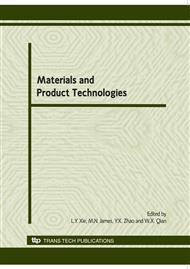p.940
p.944
p.948
p.952
p.957
p.962
p.967
p.972
p.977
Product Data Integration and Management Research Based on XML
Abstract:
Product information technology has been widely applied in manufacturing field, improved the rapid response ability of enterprises to the market demands, and to some extent enhanced the competitiveness of enterprise products. However, product data information generated by different information system has the characteristics of diversification and differentiation. The integration and management of these product heterogeneous data has become the bottleneck which restricts the development of enterprise information technology. Based on XML, this paper researches the integration and management of heterogeneous data, expounds integration structure of heterogeneous data, introduces integration process and schema mapping of heterogeneous data, and realizes schema translation of heterogeneous data. Finally, through the PLM XML schema which is provided by the product life-cycle management software, this paper verifies the integrated management of relational heterogeneous data on Teamcenter.
Info:
Periodical:
Pages:
957-961
Citation:
Online since:
June 2010
Authors:
Keywords:
Price:
Сopyright:
© 2010 Trans Tech Publications Ltd. All Rights Reserved
Share:
Citation:


